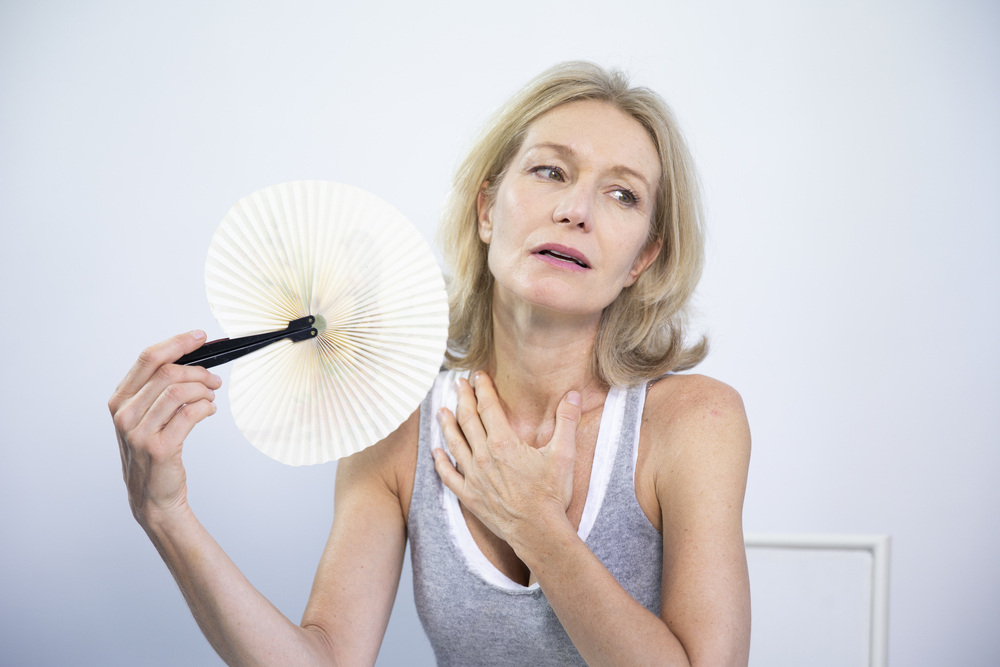One of the most common complaints from women & Mum’s I work with, as they get older, is the occurrence of hot flushes. These annoying & common reactions in the body can have you go from one extreme to the next. Comfortable and content one minute to a sweaty hot mess the next. They can range from mild to debilitating and have a significant effect on the daily life of mums all over the world. Have you had this experience?
Physically, they leave you feeling like a hot mess! Consequently, leaving you frustrated because, let’s face it, there is never a good time to get a hot flush! ……..In the supermarket line, on a zoom call, at your child’s soccer game, out to dinner or at night when you are trying to sleep?!
None of the above! Argh! So frustrating!
Hot flush causes, knowing the triggers can help to put steps in place to avoid or reduce the frequency. Knowing tools that can help with cooling you down is also beneficial.
Today, in this blog, I’ll revisit some of the basics around hot flushes, hot flush causes, 5 things that might be heating up your hot flushes & 3 herbs that help too.
What is a hot flush?
Let’s start, with what is a hot flush & hot flush causes.
A hot flush is a sudden feeling of warmth or heat in the body. These may occur on their own or often along with night sweats or excessive sweating during the day.
Hot flush causes:
Essentially, it’s the drop in oestrogen levels in the body. However, other mechanisms are also at play.
The falling levels of oestrogen in the body affect the hypothalamus. This gland is responsible for regulation of temperature. During menopause the body’s thermostat becomes more sensitive. This sensitivity means it reacts more than normal to changes in the body’s temperature.
Normally…
In normal circumstances, the hypothalamus tells the body ‘it’s too hot in here, I need to cool down’. Therefore, if you get too hot, the blood vessels in the surface of the skin will start to open up (vasodilate). Blood will come to the surface and the heat will dissipate into the air. This is one way that you will cool down. If you are extra hot, then sweating will also occur. When sweat evaporates from the skin, it’s what cools you down.
In perimenopause or menopause…
5 things that may be heating up your hot flushes
Each woman’s triggers can be different, but a few of them are common.
Let’s look at 5 of the common triggers that may be heating up your hot flushes.
- Stress
- Consuming alcohol or coffee
- Eating spicy foods
- Smoking or being exposed to second hand smoke
- Movement
Stress
When the body is triggered by stress, stress hormones are released by the adrenal glands and sent through the body. The body then gets ready to fight or run, due to the perceived danger. These hormones make the muscles tight, increase the heart rate, cause increased breathing and essentially shut down the mechanisms that aren’t needed during danger (digestion and the reproductive system).
What happens in perimenopause or menopause?
When you are stressed, stress hormones are released and send the signals to your brain to elevate your heart rate and increase blood flow. The hypothalamus registers this as the body overheating and does what it knows to do in that situation and heats up your body to cool it down ………bam! There’s the hot flush.
Stress management is an important factor to consider in hot flushes.
Caffeine
Does caffeine make hot flushes worse?
Caffeine is a vaso-constrictor. This means that it restricts blood vessels. It is also known to increase heart rate which may signal the hypothalamus and therefore trigger a hot flush.
Spicy Foods
Foods packed with spice, taste great, yet may also be a trigger for a hot flush. This is because they are often vasoconstrictors. In some women they have the same effect as caffeine and trigger a hot flush.
Exercise
This one can be really annoying! Anything that elevates your heart rate, things like cardio based exercises can trigger a hot flush. Wearing loose, breathable clothing, exercising in a cooler environment and having enough time to cool down after exercise can help with managing this trigger.
Smoking or breathing in second hand smoke
There are a few reasons why smoking can trigger a hot flush. Firstly, it increases your heart rate. Secondly, you inhale warm air and thirdly, nicotine is a vasoconstrictor.
These triggers many vary from woman to woman. Understanding your specific triggers can help you to manage your own hot flushes.
3 herbs that help to manage hot flushes:
Herbal medicines have a range of plants in the form of tinctures, powders, tablets and teas that can help with hot flushes.
Black cohosh – Cimicifuga racemosa
This herb is one of the most extensively researched herbs for menopause and other menopause symptoms. Black cohosh has been traditionally used to help with hot flushes, sleep disturbances, irritability, mood & joint aches and pains.
Sage – Salvia officinalis
Sage, is often prescribed to help alleviate hot flushes or sweating in menopausal women. Often enjoyed in Tea form to aid in the symptoms.
Red clover – Trifolium pratense
Red clover and it’s isoflavones are believed to help with menopausal symptoms such as hot flushes. Isoflavones are water soluble compounds that act like oestrogen in the body.
For best results with herbal medicines, best to speak with a qualified naturopath or herbalist. Personalised prescribed herbs can work more specifically for you and your individual concerns.
For many women, the symptoms of hot flushes occur in peri-menopause and menopause. There are many contributing factors that may trigger or exacerbate them, including stress, caffeine, spicy foods, smoking & movement. Understanding the mechanisms behind why hot flushes occur, what execrates them and a few key herbs can help to manage them in your own life.
Ready for less hot flushes, during the day and night? Clients tell me how much more energy they have once they’re not getting woken in the night with a hot flush.
Book your Free Health Chat Free Health Chat with me, to get your hot flushes and other menopausal symptoms under control.


